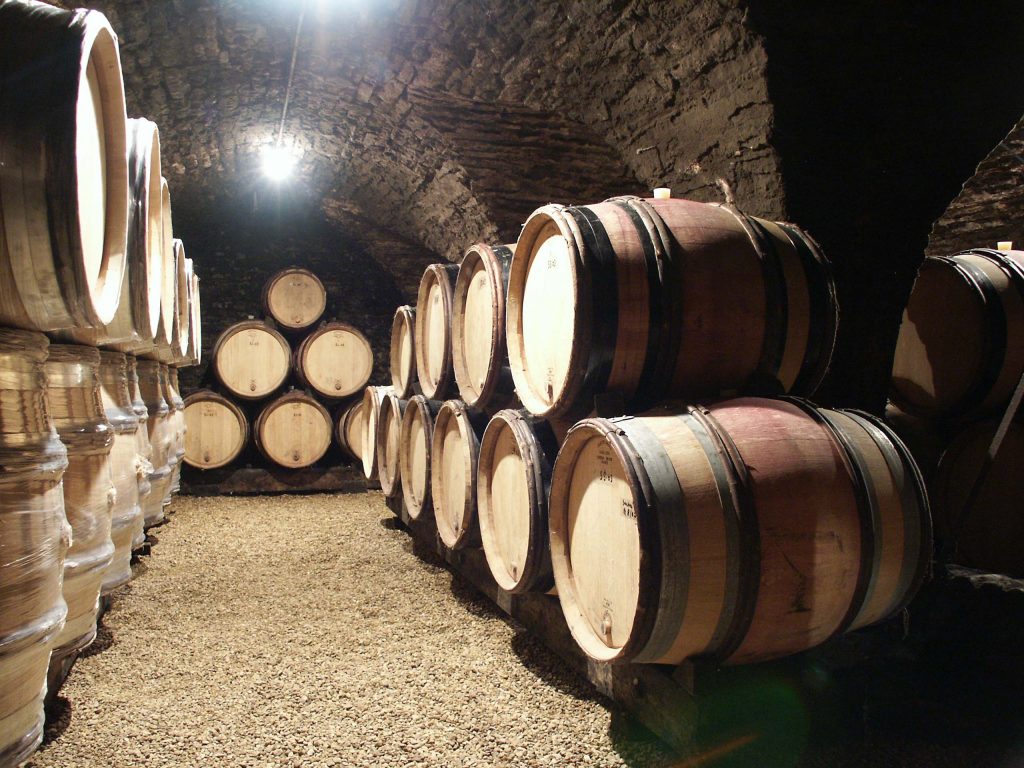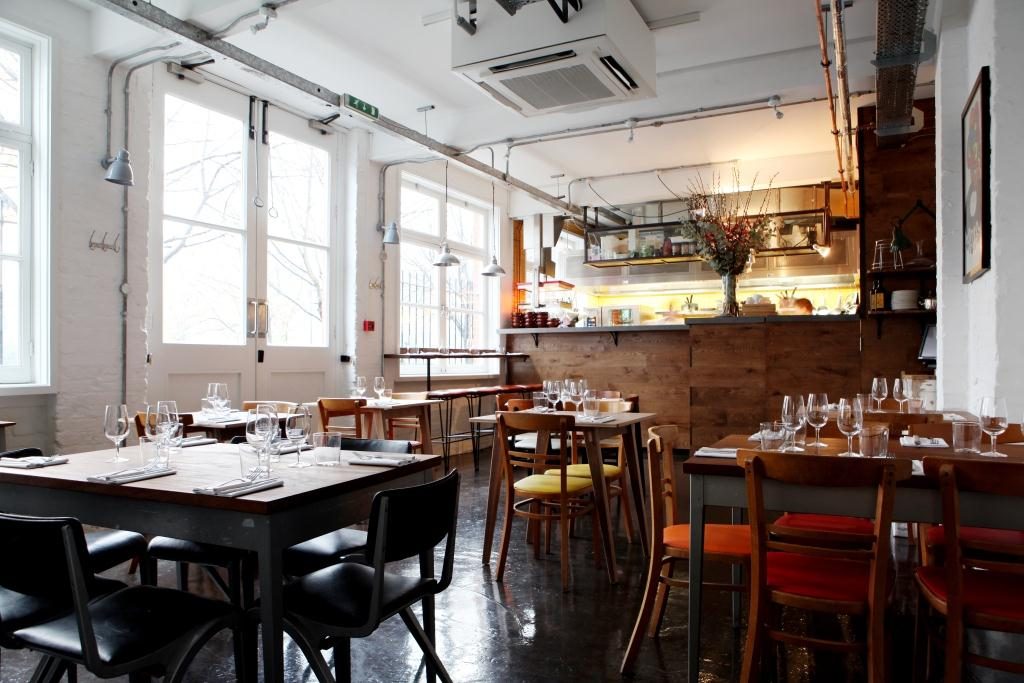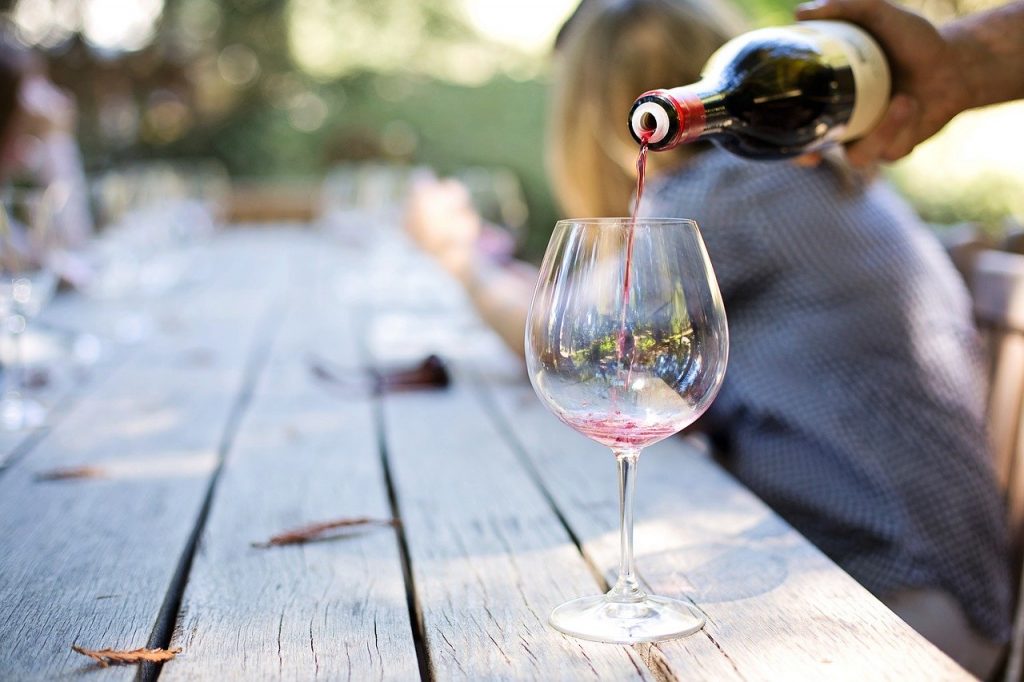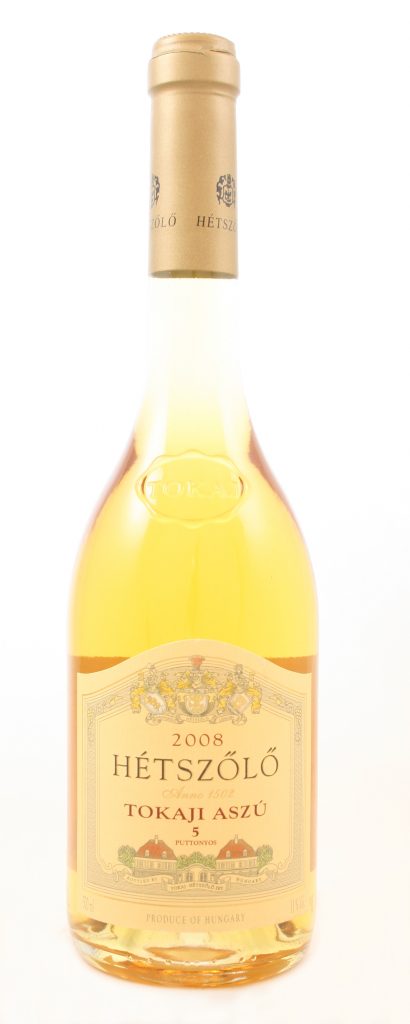Here is a lexicon of definitions of key wine words. The definitions are not intended to be scientifically objective and, in many cases, will be somewhat simplistic. Some will describe the technical side of wine(s), others will examine the more abstract and aesthetic ideas behind wine.
To view Doug Wregg’s Real Alternative Wine Glossary, starting with the As, click here.
Balance. Like beauty (see below) balance is often on the palate of the beholder. One definition might be that the balance of the wine resides in the seamless aggregation of all the various aromatic, taste and textural components that create the impression of a harmonious whole. One person’s ripeness may be another’s over-ripeness, for example. Moreover, our expectations invariably inform our sense of taste. For me, balance is the sense that the wine possesses an internal logic, that even if there is a tension between different aspects of the wine, then that tension will be eventually (and happily) resolved.

Barrels/Barriques. Denotes for our purposes any wooden vessel that contains wine. There are, as it happens, stainless steel barrels, but let us not become distracted. Barrels, usually made of oak wood, but can be also wrought from acacia, chestnut and other woods, may be used as containers in which wine is fermented and, of course, as maturation vessels post-fermentation. The barrels may be made of new wood; the graining and porosity is significant in terms of the elevage of the wine. The quality of the wood, degree of “toasting” and the period of air-drying will contribute materially wine’s taste. The size and shape of the barrel is a further point of difference: barriques tend to be around 228 litres with a higher wood to wine ratio; where the bigger the barrel, the mellower the influence of the wood. Barrel-making or coopering is a craft and an art form; many producers establish relationships with coopers who understand the flavour and texture profiles they are seeking to achieve in their wines. Those vignerons who prefer that their wines have less of a discernible oak influence will age them in barrels that have been used on many previous occasions. There is even such a thing as biodynamically-made barrel, but we will leave that for another day.
Bars. A measurement of the pressure in sparkling wines. Some wines have more pressure than others, according to the method in which they have been made, with “traditional method” wines having the highest – and thus requiring reinforced glass bottles to cope with it as well as mushroom corks and cages. Ancestral method and pet nats, having lower pressure, are usually sealed under a crown cap. There are two broad legal categories of wine depending on the amount of pressure in the bottle. Those above three atmospheres (3 bars) of pressure are subject to sparkling wine duty, whilst those below are accorded (duty wise) still wine status. Fully sparkling wines tend to have 5 or 6 bars of pressure. This is invaluable for the podium placers in Formula One as it allows violent eruptions after shaking the bottle vigorously. What larks!

Bars, Wine. Wine bars have come a long way since the days of short lists of cheap brands, sponsored champagne awnings and questionable sandwiches. The wine bar scene in many countries is now dominated by natural wine bars. And not just wine but craft beer, artisan mezcal, gins from local micro-distilleries. Most natural wine bars have a decent food offering, whether it is a selection of charcuterie, cheese and little snacks, or cooked dishes made with excellent ingredients. The wine though is the thing, and these small establishments will be run by passionate people who, desiring to share their enthusiasm, are moving away from the classic sommelier transactions to a more intimate and informal approach where experimentation is encouraged and bottles may be opened to try before you buy.
Bâtonnage. Bâtonnage is the French term for stirring the lees back into wine. Those lees are the sediment of winemaking, usually made up of dead yeast and bits of grape seeds and solids. Winemakers like to keep the juice in contact with the lees in order to extract material and aroma, before racking or filtration. Leaving the lees undisturbed at the bottom of the barrel can result into stinky hydrogen sulphide compounds forming. Bâtonnage can help prevent this and is often done early in the ageing process, but too much lees-stirring can often be counter-productive.
Beauty. Rarely referred to, or used in a tasting note, as it is in the eye of the beholder. Certain wines may or may not be inherently beautiful, but the perception of beauty is usually accompanied by a powerful evocation of a deep memory or an instantaneous recognition of harmony, as if all the component parts of the wine were singing together and you happened to be there to experience it.
Biodynamic(s). A method of farming propounded by Rudolf Steiner, based on the writings of Goethe and many others, now applied to viticulture. Many farmers draw on aspects of Steiner’s teachings, particularly with regard to the so-called biodynamic preparations: 500, 501 and so forth, and make homeopathic treatment sprays according to the prescribed methods. Biodynamics has philosophical overtones and seeks to explain the relationship between man, animals, the environment, and how the soil below and the sky above influence and animate the organism that is the farm. Those who follow a biodynamic regime are proactive farmers and seek natural and holistic, rather than chemically-derived, solutions. Whatever the science, more and more farmers are converting their approach to these methods, as they understand that a healthy dynamic environment allows their vines to flourish and that the great wines can only come from truly living vineyards. Biodynamic wine is certified by Demeter associations across the world and also by Biodyvin.
Bitterness. Often an attribute of wine that has relatively low acidity, or one with a certain phenolic component. It is also perceived as a lack of sweetness and obvious fruitiness. In white wines it might be expressed as the taste or sensation of quinine, dried fruit and overall astringency; in reds in terms of perceptions of flavours if dark chocolate, coffee, black tea, to name a few. Bitterness is used as a pejorative descriptive by some, as a positive attribute by others, depending on the nature of the individual palate.

Blind tasting. The act of tasting a wine without knowing what it is, so that one is not unduly influenced by certain information or presupposition, and therefore able to arrive at a more objective assessment of its taste. The main blind tastings are panel tastings (also known as wine juries) and local and international wine awards. Small groups of friends may also enjoy playing blind tasting games. The advantage of the latter is that one can focus entirely on the wine in question and, having no idea what it is, search for clues in the liquid itself. The main disadvantage of the big scale tasting is that it is composed of long flights of the same grape variety or blend, usually from the same region. Rather than trying to guess what the wine is and explore it from every aspect, the idea is to calibrate different impressions, and give the wine a mark relative to other wines from the same grape or region. Thus, assessment becomes the object of the exercise. Blind tasting can also be hampered/spiced up by intellectual confusion. One can, for example re-taste the same wines and come to different conclusions, and a completely different jury of tasters might assess the wines in a completely different way. Aficionados of natural wine deplore the idea of panel blind tasting “marks-ism”, but play wine tasting games with glee and gusto.
Botrytis. Also known as “noble rot,” a beneficial mould that grows on ripe wine grapes in the vineyard under specific climatic conditions. The mould dehydrates the grapes, leaving them shrivelled and raisin-like and concentrates the sugars and flavours. Wines made from these berries have a rich, complex, honeyed character and are often high in residual sugar. Botrytis contributes to the unique, concentrated flavours in such wines as BA and TBA Rieslings from Germany, Sauternes from Bordeaux, Aszú from Hungary’s Tokay region and an assortment of late-harvest wines from other regions. The humidity which allows these beneficial spores to flourish usually occurs around rivers and lakes and is associated with damp misty mornings and dry sunny afternoons during the autumn months. The flavours of botrytis wine tend to remind one of apricot or peach jam, sticky raisins, sweet grapefruit (at the less concentrated end of the spectrum). The finish can be waxy and minty, and depending on the oak regime, crème brulée and toast.

Bottle shock. Bottle shock (sometimes called bottle sickness) is a term used to describe a wine that is disjointed, unfocused or whose flavours are muted. This can happen immediately after bottling, or when wines have spent time in transit, having experienced changes in temperature or simply been shaken about for some reason. Living wines are always in flux in any case and are naturally sensitive to changes in their environment.
Breathing. See aeration.
Bubbles. Or bulles. An informal description of any sparkling wine, formerly a jokey reference to champagne, but now grouping together any fizz, be it traditional method, charmat, pet nat or ancestral techniques. Whichever the sparkling wine process, it is in fact the microscopic particles of dust in the wine glass itself that enable bubbles to form. These act as condensation nuclei for the dissolved carbon dioxide. According to one champagne house there are over 250 million bubbles in the average bottle of champagne. Note: even if seeing bubbles brings you inordinate joy you should still clean your champagne glasses.
Bulk wine. The idea behind bulk wine is to produce wine in as great a volume as possible and as cheaply as possible. Wine is generally sourced from monocultural vineyards where land is cheap, farming is mechanised, irrigation is allowed, and in places where there are big production facilities to process and bottle the grapes. Bulk wines will tend to be varietal and unexceptional. The downsides of manufacturing wine in bulk is the amount of land turned over to a single culture, the quantity of chemical interventions required, and, on the other side, the expectation that wine can be created at a low cost and by industrial means. The bulk wine ethos has permeated the quality end of the market where better wines are now being shipped in key keg and tank and there is a debate about the environmental impact of bottling and shipping wine.

